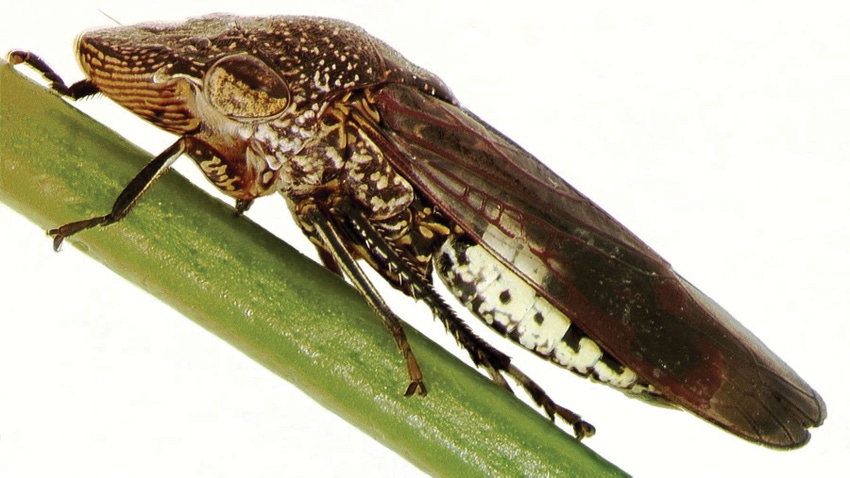
While it may sound like one of the bad guys in a cactus-filled Western movie, the glassy-winged sharpshooter does its evil deed among grapevines. Although small in size and innocuous enough when it feeds on plant tissues, the leafhopper excretes copious amounts (read: lots of) sticky liquid that hardens on the plants.
Most seriously, sharpshooter damage involves transmission of a bacterium that causes plant diseases --- including leaf scorch and Pierce’s Disease. When these critters feed on an affected plant, the bacterium grows in the pest’s mouth and is continually transferred when the sharpshooter moves on to feed on other plants.
While West Coast grape growers continually monitor for pests, special attention was focused on GWSS presence after traps in San Joaquin and Santa Barbara Counties captured adult sharpshooters in 2020 and infections of Pierce’s Disease in Napa and Sonoma Counties were blamed on the pest. Spittlebugs are also suspected as a vector in spreading the disease among North Coast vineyards.
The University of California pest management protocol advises that the insects are often abundant on cultivated grapes. Eggs hatch in early summer and young adults move into vineyards following budbreak with adult numbers increasing throughout July and August.
Because of the timing of their appearance, the Washington Wine Industry Foundation and Washington State University Viticulture Extension included them as part of its Stop The Spread: “Pests to Watch Out For” webinar series and brought in an expert on the subject who recommended maintaining a Northern California/Oregon border barrier to keep the pest away.
Bakersfield-based UCCE entomologist David Haviland --- with 20 years’ experience dealing with the half-inch-long pest — discussed, “What I’d want to know it showed up in my backyard.”
“Although they switch hosts during the day, they have their favorite spots to dine and they absolutely love grapes,” he said noting that spring nymphs start out in citrus orchards before moving to grapevines in the summertime.
Pierce’s disease
“They’re named ‘sharpshooters’ because they line up parallel to the shoots to feed, hugging their hosts while using straw-like sucking mouth parts.” That, in and of itself, represents a nuisance until things turn serious when the blue-green sharpshooters bring Xf (Xylella fastidiosa) bacteria that causes Pierce’s disease, a bane of grape growers because, once introduced, the bacteria multiply with no cure for xylem.
According to the University of California’s Integrated Pest Management write-up on the subject: “Movement into vineyards increases as other natural vegetation dries up with eggs hatching through July and the adult population continuing to increase into August until grape foliage becomes less succulent and they move back to other natural habitats.”
Although basically a tropical insect that loves places like Mexico, Florida, and Baja, California --- as well as lower elevation crops in Southern California --- “Satellite populations are found in unexpected locations because it’s mobile and can cover long distances. We’re always trying to eradicate it somewhere and although Washington has places too cold for GWSS to survive, this pest should be on your radar screen.”
Some native parasitoids work to eliminate such pest populations, but yellow sticky cards on bamboo poles within the vineyard are key to monitoring its presence. “These blunder traps in quarter-mile grids work well,” he said, noting that CDFA has, “thousands of traps positioned throughout the state.”
Because a certain time lapse is involved between infection and discovery, “The inability to detect and remove vines with Xf in the year the vines are inoculated is a primary challenge for a PD management program,” he said.
“While GWSS is a manageable problem, the best bet is to keep the pest out of your fields. Inclusion of GWSS on your quarantine list is justified.”
About the Author(s)
You May Also Like




